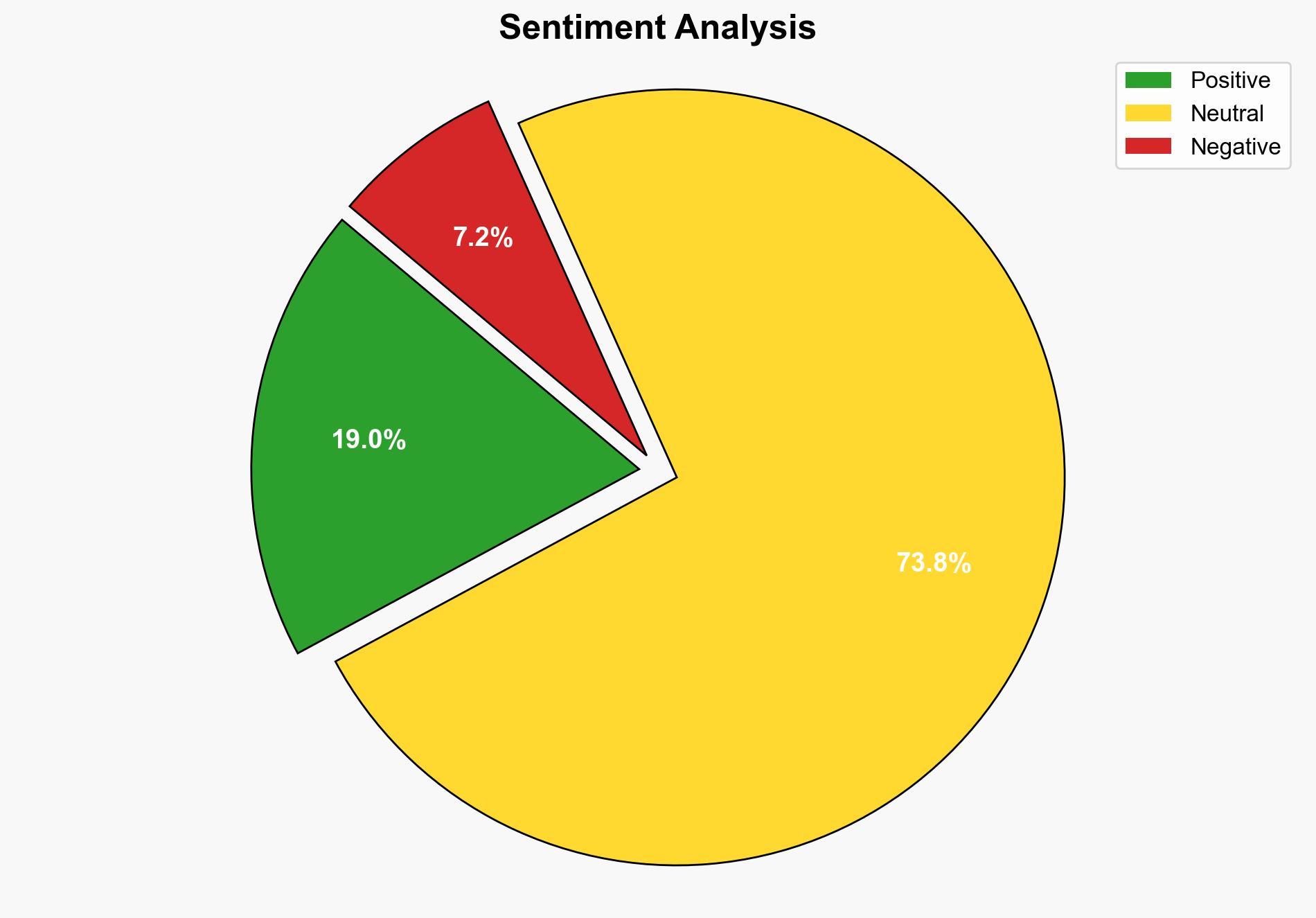White House tech director breaks down plan to balance AI national security and export promotion – Nextgov
Published on: 2025-07-30
Intelligence Report: White House tech director breaks down plan to balance AI national security and export promotion – Nextgov
1. BLUF (Bottom Line Up Front)
The strategic judgment is that the White House’s approach to balancing AI national security with export promotion is primarily focused on maintaining technological leadership while managing risks associated with semiconductor exports. The most supported hypothesis is that the U.S. aims to strategically control semiconductor exports to maintain its competitive edge over China. Confidence level: Moderate. Recommended action: Strengthen export control mechanisms and enhance international collaboration to ensure compliance and mitigate risks.
2. Competing Hypotheses
1. The U.S. is primarily focused on maintaining technological leadership by controlling semiconductor exports to China, ensuring that AI advancements do not empower adversarial nations.
2. The U.S. is balancing national security concerns with economic interests by allowing selective semiconductor exports to maintain market access and influence global AI development.
Using ACH 2.0, the first hypothesis is better supported due to the emphasis on export controls and concerns over China’s potential military applications of AI technology. The second hypothesis is less supported as the narrative focuses more on security than economic interests.
3. Key Assumptions and Red Flags
– Assumptions: The U.S. has sufficient control over semiconductor exports to influence global AI development. Export controls can effectively prevent adversarial use of AI technology.
– Red Flags: Potential underestimation of China’s ability to develop indigenous semiconductor capabilities. Lack of clarity on enforcement mechanisms for export controls.
– Missing Data: Specific details on how export controls will be enforced and monitored.
4. Implications and Strategic Risks
– Economic Implications: Restrictive export controls could impact U.S. semiconductor companies’ revenues and global market position.
– Cybersecurity Risks: Potential for increased cyber espionage as adversarial nations seek to bypass export controls.
– Geopolitical Risks: Strained U.S.-China relations could escalate trade tensions and impact global supply chains.
– Psychological Impact: Domestic and international stakeholders may perceive the U.S. as prioritizing security over economic collaboration.
5. Recommendations and Outlook
- Enhance export control frameworks with clear guidelines and robust enforcement mechanisms.
- Foster international partnerships to align export control policies and share intelligence on AI advancements.
- Scenario Projections:
- Best: Effective export controls maintain U.S. technological leadership without significant economic fallout.
- Worst: Overly restrictive controls lead to economic losses and accelerated adversarial technological development.
- Most Likely: A balanced approach that maintains security while allowing limited economic engagement.
6. Key Individuals and Entities
– Michael Kratsios
– Donald Trump
– Howard Lutnick
– Jeffrey Kessler
– Nvidia
7. Thematic Tags
national security threats, cybersecurity, export controls, U.S.-China relations




